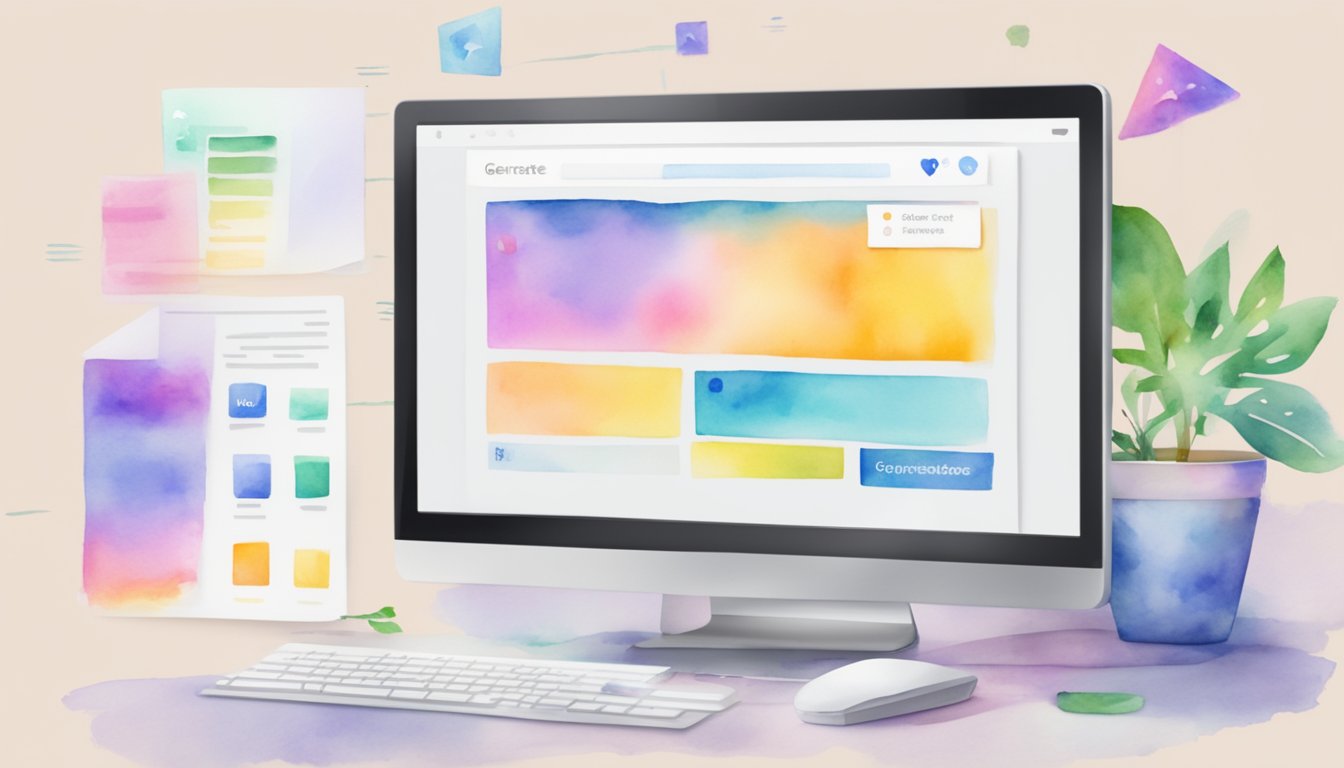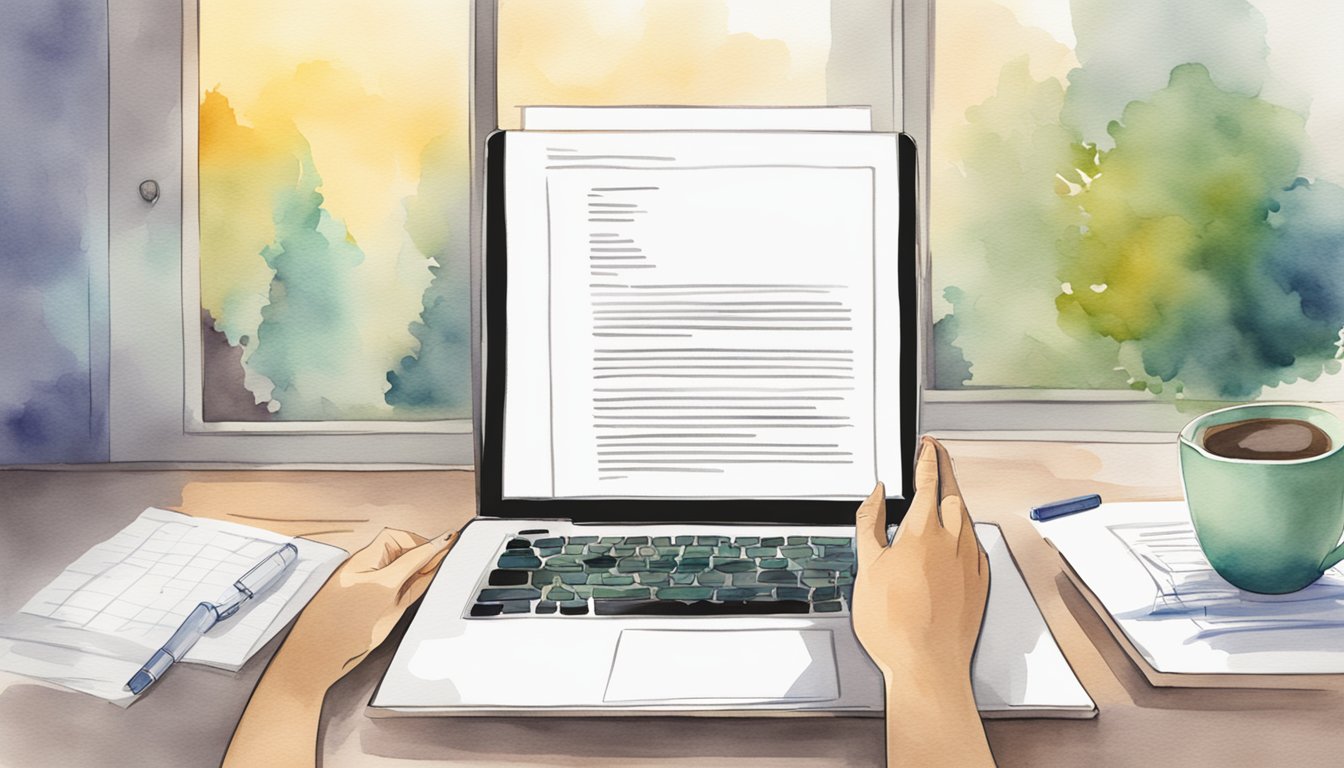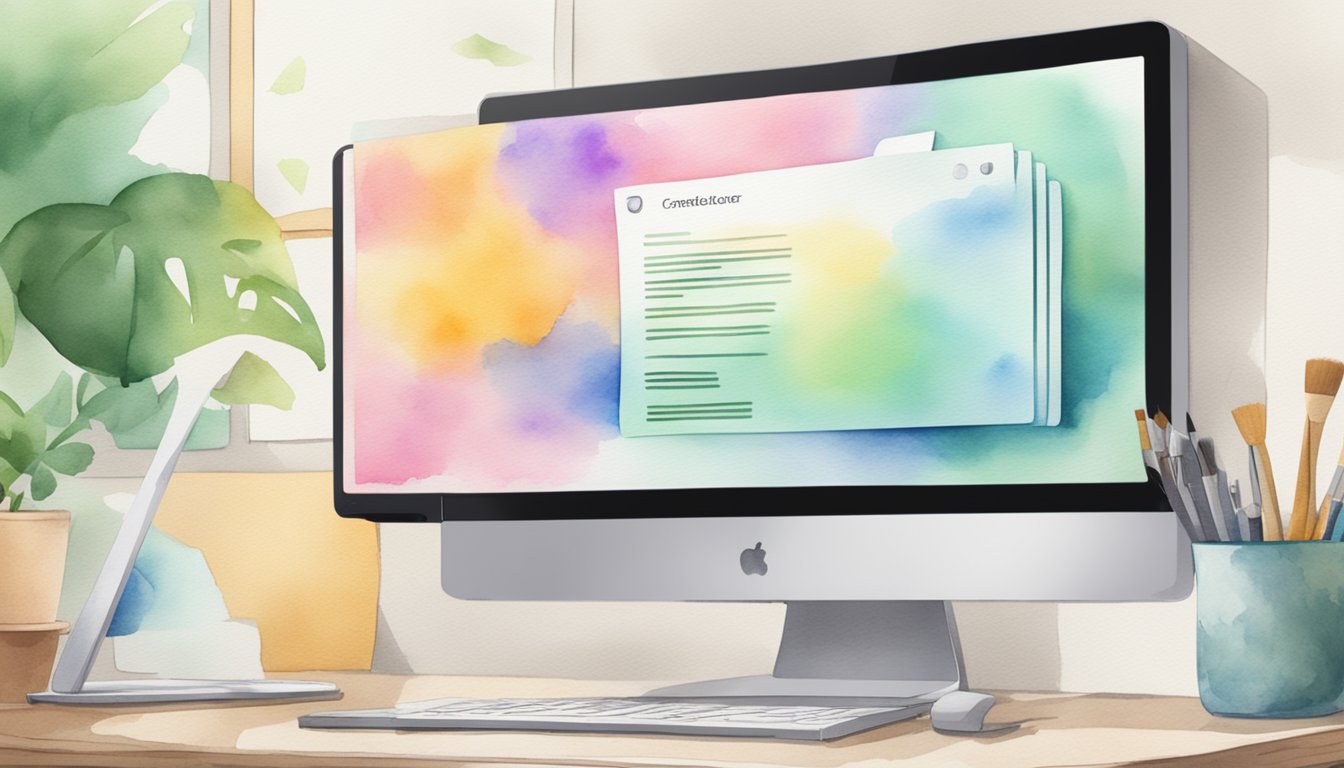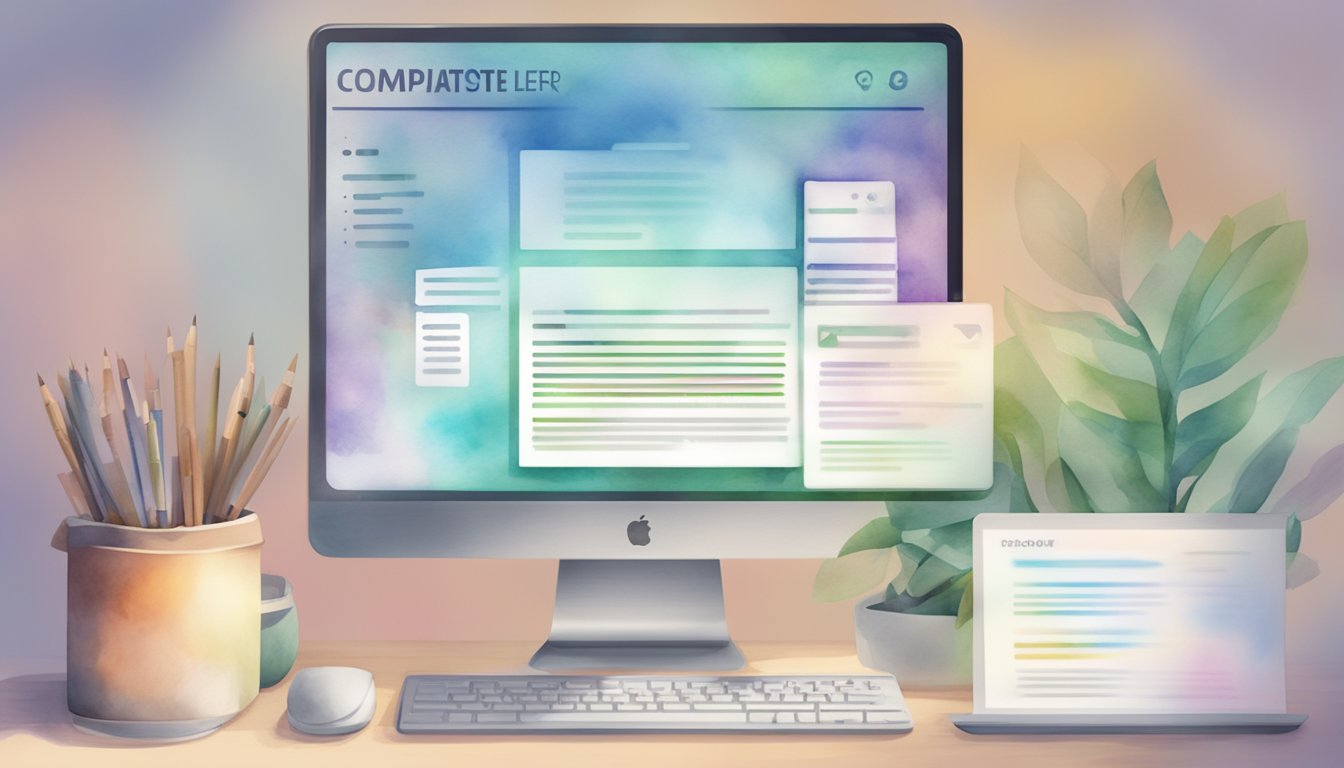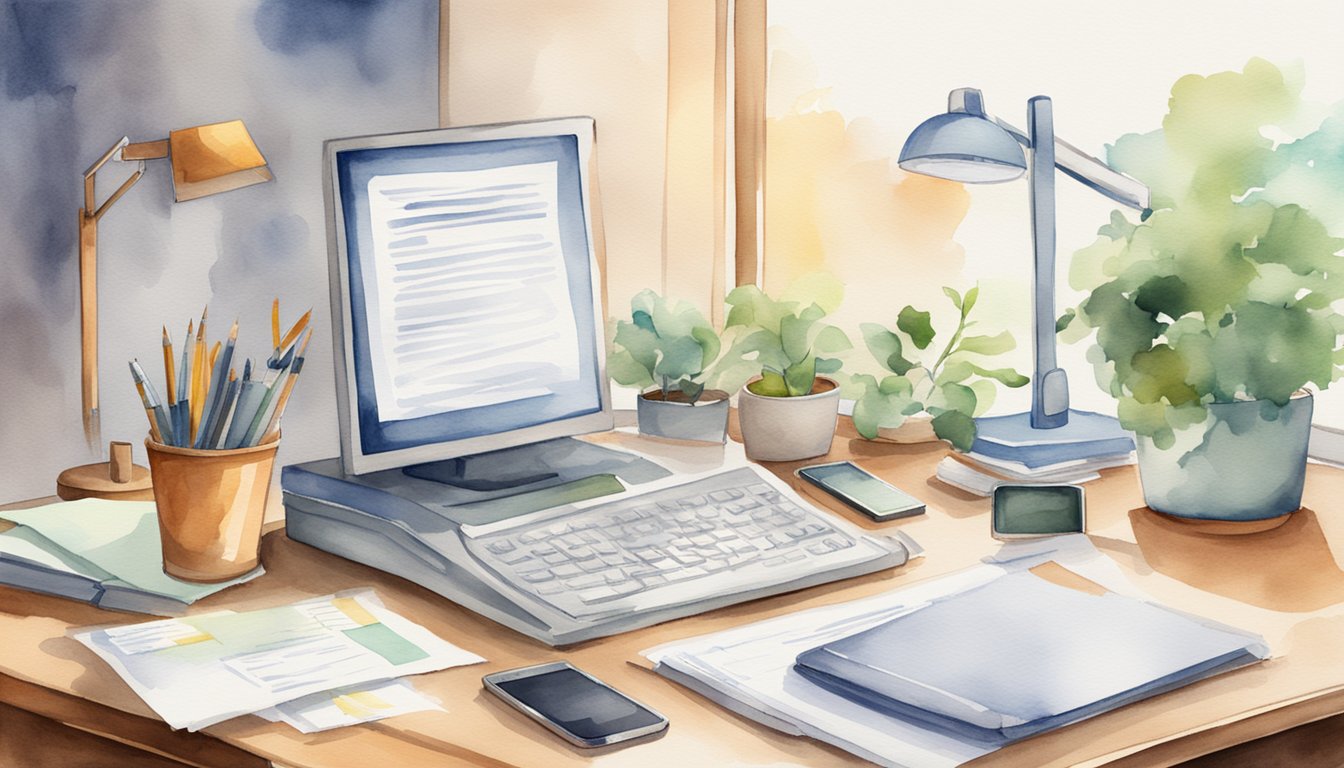Navigating the job market can be daunting, and a well-crafted cover letter can make all the difference in landing your dream job. A cover letter generator simplifies this process, offering a user-friendly platform where you can create a professional cover letter quickly. It saves time and helps you focus on tailoring your application to each specific role, ensuring that your first impression counts.
These tools are designed to guide you through the essential elements of a cover letter, such as contact information, personalized greetings, and effective content that showcases your skills and experiences. Advanced generators incorporate AI to offer tailored advice, improving the overall quality of your cover letter. Whether you’re responding to a job listing or reaching out proactively, a cover letter generator equips you with a polished end product, ready for submission along with your resume.
Key Takeaways
- Cover letter generators help you craft a professional-looking cover letter efficiently.
- Advanced features of generators provide personalized suggestions for improving content.
- The final product is formatted and ready for submission, streamlining your job application process.
Understanding Cover Letters
https://www.youtube.com/watch?v=hrZSfMly_Ck&embed=true

Before diving into the tools that generate cover letters, it’s essential to grasp what they are and the pivotal role they play in your job application process.
Purpose of a Cover Letter
Your cover letter is your personal narrative that accompanies your resume. Unlike the resume which primarily displays your experience and skills in a factual manner, the cover letter is where your personality and intentions shine through. Think of it as your opening pitch; it’s strategically designed to capture the hiring manager’s attention and convince them that you’re the right fit for the job.
The Role of a Cover Letter in Job Applications
A cover letter acts as a bridge between your resume and an interview. It gives context to the listed experiences on your resume, explaining how your skills make you an ideal candidate for the role at hand. Without a cover letter, the hiring manager might not understand why you’re applying or what makes you stand out. It sets the stage for your job application, pushing the hiring manager to consider looking at your resume in more detail.
Getting Started with Your Cover Letter
https://www.youtube.com/watch?v=JeRNUJzZON4&embed=true
Creating a compelling cover letter can be straightforward when you have the right tools at hand. By analyzing the job post thoroughly and identifying both your relevant skills and experience, you’ll be able to present yourself as the ideal candidate to the hiring manager.
Analyzing the Job Post
Examine the job post carefully to understand what the company is looking for. Make a list of the key qualifications, job title, and any specific skills mentioned. Pinpoint the attributes the employer values most, whether that’s teamwork, leadership, or problem-solving. This analysis will serve as a guide for tailoring your cover letter.
- Keywords: Highlight specific keywords related to skills and responsibilities.
- Company Goals: Infer what the company goals might be and how the role fits into achieving them.
- Culture Fit: Look for hints about company culture to emphasize how you’d be a great fit.
Identifying Your Relevant Skills and Experience
Now, reflect on your work experience and identify instances where you’ve showcased the skills mentioned in the job post. Think about your professional achievements and how they might resonate with the hiring manager. Be ready to illustrate these with concrete examples.
- Skills: List your skills that directly relate to the job.
- Example: If the job requires strong writing skills, note any writing-intensive projects you’ve completed.
- Experience: Connect your past work experience to the job requirements.
- Example: “Managed a team of 10” if leadership is a desired quality.
- Achievements: Quantifiable achievements can greatly strengthen your pitch.
- Example: “Increased sales by 20% over six months.”
Approach this process with the perspective of the hiring manager: what would you find compelling if you were in their position? Use this section of your cover letter to highlight why you’re not just a qualified candidate, but the right candidate for the job.
Choosing the Right Template
Selecting the right template for your cover letter can set the tone for your application. It’s your chance to make a compelling first impression, so choosing a design that aligns with your industry and personality is key.
Cover Letter Templates and Examples
Identifying Your Style: Start by identifying your style. Are you looking for something classic and understated, or a design that is modern and innovative? Templates provide a variety of options, so you can find one that matches your personal brand.
- Professional Fields: For more conservative fields, like law or finance, choose a template with a clean design and structured layout.
- Creative Industries: If you’re in a creative industry, explore templates that allow for more flair, like adding a personal logo or using distinctive typography.
Examples for Reference: Utilize cover letter examples as a reference to understand how your information can be formatted within different templates.
- Real-World Context: Look at examples that relate to your job level and sector. They can give you an idea of what recruiters in your field expect.
- Adapt and Customize: Use these examples as a starting point, and adapt the content to reflect your unique experiences and skills.
Benefits of Using a Template
Efficiency and Consistency: By using a template, you save time on layout and formatting, allowing you to focus more on content. A template ensures that your cover letter maintains a professional and consistent look, which is critical in showing employers your attention to detail.
- Pre-Designed Formats: Templates come with pre-designed formats, so you don’t have to worry about font sizes, margins, or alignment.
- ATS Friendly: Many templates are designed to be Applicant Tracking System (ATS) friendly, meaning your cover letter is more likely to get through automated job application filtering systems.
Personalizing Your Cover Letter
Creating a personalized cover letter can significantly increase your chances of catching an employer’s eye. It shows you’ve invested effort to tailor your application to their specific needs and values.
Tailoring Content to the Job Description
To customize your cover letter, align your qualifications with the job description provided by the employer. Review the listing and:
- Make a list of key skills they seek.
- Match these with your strengths and experience.
In your letter, refer to these skills with concrete examples from past work that prove you’re the optimal candidate for this role.
Highlighting Individual Achievements and Goals
Your cover letter should showcase your achievements. Focus on quantifiable successes that are relevant:
- “Increased sales by 20%” demonstrates impact.
- Mention how goals align with the company’s direction.
If you have employment gaps, use this space to explain succinctly, reframing the gap as a period of growth and learning.
Remember, a personalized cover letter is your opportunity to illustrate not just that you’re qualified, but that you’re the perfect fit for this job.
Cover Letter Design and Format
When crafting your cover letter, it’s essential to pay attention to both design and formatting. These elements ensure your application looks professional and is easy for hiring managers—and applicant tracking systems—to review.
Optimizing for Applicant Tracking Systems
Applicant Tracking Systems (ATS) are used by employers to filter and manage high volumes of applications. To get through these systems, your cover letter should follow a standard format that the ATS can easily parse. This means using a .doc, .docx, or .txt file format and avoiding graphics or images that might confuse the software. For your cover letter to be ATS-friendly:
- Stick to common fonts like Arial or Times New Roman.
- Ensure headings are clear, with your name and contact information at the top.
- Use bullets or short paragraphs to break up text, making it more easy to read.
Selecting the Appropriate Font and Color Scheme
Your cover letter’s visual design includes the font and color scheme, which should align with the company’s branding while remaining easy to read and professional. When choosing your fonts:
- Serif fonts like Times New Roman suggest formality, while sans-serif fonts like Arial feel more modern.
- Keep your font size between 10.5 to 12 points to ensure readability.
For your color scheme:
- Stick with a black font on a white background for the bulk of your text.
- You can add a touch of color to headers or your name, but choose a muted color that reflects the company’s palette.
Remember, the key to an effective cover letter design is subtle, professional embellishments that enhance rather than distract from your message.
Contact Information and Introduction
Crafting a compelling cover letter begins with the right introduction and relevant contact information. This ensures a professional approach and sets the tone for your application.
Writing an Engaging Opening
Salutation: Start with a friendly yet formal greeting, such as “Dear [Hiring Manager’s Name],” to personalize your cover letter. If the name isn’t known, “Dear Hiring Manager,” is a suitable alternative.
Introduction: Express your enthusiasm for the position right from the beginning. A strong opening statement captures attention and can make your cover letter more memorable. For example, “I am thrilled to apply for [Job Title] at [Company Name], where I believe my skills will be a perfect fit.”
Including Essential Contact Details
Ensure your cover letter contains the following information in a clear and accessible format:
- Name: Boldly state your name at the top to make it stand out.
- Email: Provide a professional email address; consider formatting it in italics.
- Address: While a full address isn’t always necessary, include at least your city and state.
- Additional Contact: If relevant, add a LinkedIn profile or personal website.
Here’s a brief example of how to format this part of your cover letter:
| Your Name | Your Email | Your City, State |
|---|---|---|
| Jane Doe | [email protected] | New York, NY |
Remember to keep this section neat and easy to reference, as hiring managers may need to reach out to you quickly.
Building a Professional Image
https://www.youtube.com/watch?v=NUhDP30IRKk&embed=true
Creating a consistent professional image is crucial when applying for a job. Your cover letter is a key part of this and should complement your resume to present a unified brand to potential employers.
Matching Your Resume
When you use a cover letter maker like Canva, ensure that the look and feel of your cover letter closely aligns with your resume. This means selecting a template that matches your resume’s design elements—think fonts, color schemes, and overall aesthetic. Here’s a quick rundown:
- Fonts: Choose the same or complementary fonts to maintain readability and style coherence.
- Color Schemes: A consistent color palette between documents underscores a strong personal brand.
- Layout: Similar heading styles and bullet points will make your documents look professional and polished as a unit.
By presenting matching documents, you signal to the hiring manager your attention to detail and your understanding of personal branding.
Conveying Your Company Fit
A cover letter is more than a summary of your resume—it’s your opportunity to show how your values and style are a perfect fit for the company. Research the company’s culture and weave that knowledge into the tone of your letter. Here’s what to focus on:
- Discover Company Values: Investigate the company’s mission statement and highlight how your personal ethics and professional aspirations resonate with these.
- Understand Their Style: Is the company more traditional or does it have a modern, innovative approach? Mirror their style in your writing.
- Adapt Your Tone: Communicate in a tone that reflects both your personal brand and the company’s. A template from Zety can offer suggestions on tone adjustment based on company type and your experience.
In summary, convey your enthusiasm for the company and why your professional identity is a match made in heaven for their** team**.
Utilizing Digital Tools
In today’s job market, crafting the perfect cover letter is essential, and with digital tools at your disposal, you can create a professional document that stands out to recruiters. These tools provide features like writing assistance and content suggestions that tailor your cover letter to specific job applications.
Online Cover Letter Builders
Online cover letter builders, such as Grammarly’s AI Cover Letter Generator, streamline the writing process by offering structured prompts and pre-written content to help you get started. Here’s how you can use them:
- Choose a Template: Pick from a variety of designs that best suit your industry and personality.
- Fill in Your Details: Respond to simple prompts about your experience and skills.
- Get Content Suggestions: Benefit from content tailored to the job you’re applying for.
These builders function as an intuitive interface that allows for quick assembly of your cover letter. Moreover, certain platforms may offer additional features like a video generator to add a personal touch to your job application.
Editing and Customization Features
Once you’ve generated your draft, use the editing and customization features to refine your cover letter:
- Edit for Clarity: Make sure every sentence clearly conveys your strengths and suitability for the role.
- Customize Your Content: Adjust the pre-written content to reflect your personal experiences and skills.
Additionally, these tools often incorporate:
- Grammar and Spell Check: Essential for a polished, professional look.
- Tone Checkers: To ensure your cover letter matches the tone of the job posting.
By utilizing an AI-driven cover letter generator, you can take advantage of automated reviews that suggest improvements, making the editing process less daunting. Remember, your cover letter is a crucial tool in initiating a conversation with potential employers, so take the time to customize and review your content until it best represents you.
Final Touches and Submission
After crafting your cover letter with an online cover letter generator, it’s crucial to give it a final review and choose the appropriate file format before submitting it to potential employers. This ensures your first impression is professional and polished.
Reviewing Cover Letter Content
Check for Personalization: Make sure your cover letter aligns with the job you’re applying for by tailoring it to the job description and company culture. Your cover letter should reflect your understanding of the role and how your skills and experiences make you the ideal candidate.
Length and Clarity: Your cover letter should be concise and no longer than one page. Keep paragraphs short and to the point, ensuring each sentence adds value to your application.
Closing Paragraph: The end of your cover letter is your opportunity to leave a strong final impression. Include a call to action, thanking the employer for their consideration and expressing your eagerness to discuss the opportunity further.
Sign-off: End with a professional sign-off, such as “Sincerely” or “Best regards,” followed by your full name.
Selecting the Right File Format for Submission
Formatting Consistency: Before submitting, preview your cover letter to ensure the formatting has remained intact. Sometimes, the transition from the generator to a document can cause shifts in layout or font.
File Format: The most widely accepted and recommended file format for cover letters is PDF. This format preserves the document’s layout and is compatible with almost all operating systems.
- To convert your cover letter to a PDF, most text editors offer an option to “Save as” or “Export” as PDF. Select this option and review the document to confirm that nothing has changed in the conversion process.
Date: Don’t forget to date your cover letter. The date should be positioned at the top of the document, directly above the salutation, and reflect the day you intend to send the application.
By ensuring your cover letter is reviewed, polished, and submitted in an appropriate format, you increase the chances of making it past the initial review phase and into the hands of a hiring manager.
Additional Resources and Tips
To enhance your job application process, it’s important to have a well-crafted cover letter. Alongside using a cover letter generator, consider leveraging additional resources and personalized advice to make your cover letter stand out.
Frequently Asked Questions
Q: Can I use a cover letter generator for every job application?
A: Absolutely! A generator can give you a structured start, but make sure to tailor it for each specific job by highlighting relevant experiences and skills.
Q: Should my cover letter include keywords from the job description?
A: Yes, integrating keywords helps to show that your experience aligns with the job requirements. Expert advice suggests that this strategy can improve your chances of passing through Applicant Tracking Systems.
Expert Advice for Specific Situations
For Career Changers:
- Seek guidance from career experts who can help you draw parallels between your past experiences and your desired role.
- Consider consulting certified professional resume writers who specialize in career transitions to ensure a smooth narrative in your cover letter.
For Recent Graduates:
- Engage with professionals who can assist you in emphasizing your academic achievements and any internship experience related to the job field.
- Tailoring your cover letter with insights from career experts can help compensate for a lack of extensive work experience.
Maximizing Efficiency
In the job application process, creating a targeted cover letter for each position can be time-consuming. Cover letter generators are tools designed to save time and help you maintain a high level of quality across your applications.
Saving Time with Cover Letter Generators
Cover letter generators are a game-changer when it comes to streamlining your job application process. By automating the writing phase, these tools allow you to produce a polished cover letter in minutes. Here’s how they work:
- Input Your Information: Simply input your personal and professional details once.
- Choose a Template: Select from a variety of templates that best fit the job or industry.
- Customize: Tailor the content with suggested phrases that highlight your strengths.
With a cover letter generator, you eliminate the need to start from scratch every time. This not only saves valuable time but also ensures that you don’t miss any important details.
Preparing Different Cover Letters for Each Application
Using the same cover letter for every job application is not advisable. Here’s why personalizing your cover letter is important and how cover letter generators can help:
- Personalization: Customize your cover letter for each job by focusing on relevant experiences and skills.
- Efficiency: The generator can suggest variations based on the job description, helping you make targeted adjustments quickly.
Many cover letter generators are part of a matching resume builder, ensuring that your cover letter and resume are coherent and complementary. This coordinated approach reinforces your professional narrative and can make a stronger impression on potential employers.
Addressing Special Circumstances
When you’re using a cover letter generator, it’s important to tackle the unique aspects of your work history effectively. Whether you’re navigating a career change or explaining employment gaps, a thoughtful approach can enhance your cover letter’s impact.
Handling Career Changes
If you’re transitioning to a new industry, focus on the transferable skills and relevant experience that you bring to the table. Your cover letter should articulate why you’re suited for this new path and how your previous roles have prepared you for this shift.
- Highlight Soft Skills: Emphasize skills like communication, teamwork, or problem-solving that are valuable in any job.
- Connect the Dots: Make it easy for employers to see the link between your past work and your future potential. Relate specific aspects of your previous work to the job you’re applying for now.
Explaining Employment Gaps
Employment gaps can occur for a variety of reasons, from personal health to continuing education. It’s vital to address these with honesty and positivity.
- Be Forthright: Briefly explain the reason for the gap in a straightforward manner.
- Emphasize Growth: If you acquired new skills or volunteered during this time, mention how these experiences have enriched your professional profile.
Remember, your résumé is a factual rundown of your work history, but your cover letter allows you to tell your story in a more nuanced way. Use it to your advantage.
Conclusion
Crafting a strong cover letter is crucial in inching closer to your goal of landing your dream job. This section focuses on how to effectively encourage action from the recruiter and reiterate your interest in the position, showing your unwavering enthusiasm for the opportunity.
Encouraging Action
To compel the recruiter to take the next step, end your cover letter on a proactive note. Express your boldness to follow up with a call or an email within a specified period. By setting a timeframe, you demonstrate not only your serious intent but also your readiness to engage further.
Reiterating Interest in the Position
Your cover letter’s concluding remarks should vividly showcase your passion for the desired role. Briefly summarize why you believe this is your dream job and how your unique skills will add value. Let your genuine enthusiasm shine through, making it clear that this opportunity aligns perfectly with your career aspirations.
Appendix
Before diving into the tools that can help you craft the perfect cover letter, let’s make sure you have everything in check.
Cover Letter Checklist
Ensure your cover letter includes:
- Personal Information: Your name, phone number, and email address.
- Formatting: Choose multiple formats that are visually appealing, with proper spacing and structure.
- Introduction: Mention the job you’re applying for and how you found out about it.
- Body: Highlight relevant experiences and how they align with the job requirements.
- Closing: End with a call to action, inviting the hiring manager to contact you.
Sample Cover Letters for Reference
- Variety: Have a look at different sample cover letters to understand various approaches.
- Relevance: Use samples that closely match your job field and level of experience.
- Inspiration: Use these references to find the right tone and language that reflects your personality and professional fit for the role.

